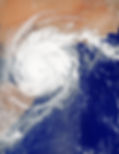Disaster Readiness
Check out the US Department of Homeland Security’s official ready.gov site for a library of tips that help explain what to expect before, during, and after a disaster occurs. We've highlighted several incidents that commonly occur in the southeastern region below. Click each block for helpful information and preparation tips.
-
Develop a plan of action. Communicate and practice beforehand.
-
Snap photos of important legal documents and other records. Store them in a safe place.
-
Keep insurance policy numbers, your carrier’s contact information, and your insurance agent’s contact information readily available.
-
Inventory & document your property. Take photos, videos, and note year, make, and model when possible.
-
Understand your insurance coverage and options. Keep policies up to date throughout the year as things change.
-
Ensure you have insurance for relevant hazards like flood, wind and hail, etc.

Hurricanes
Hurricanes are dangerous and can cause major damage from storm surge, wind damage, rip currents and flooding. They can happen along any U.S. coast or in any territory in the Atlantic or Pacific oceans. Storm surge historically is the leading cause of hurricane-related deaths in the United States.



Sever Weather
Severe weather can happen anytime, in any part of the country. Severe weather can include hazardous conditions produced by thunderstorms, including damaging winds, tornadoes, large hail, flooding and flash flooding, and winter storms associated with freezing rain, sleet, snow and strong winds.








